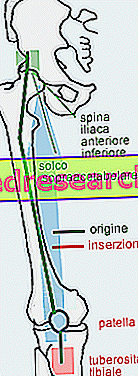
What is Synjardy - Empagliflozin and Metformin used for?
Synjardy is an antidiabetic medicine indicated in adults for the treatment of type 2 diabetes mellitus in addition to diet and exercise to improve the control of glucose (sugar) levels in the blood. Contains two active ingredients, empagliflozin and metformin. Synjardy is indicated in the following groups:
- in patients not adequately controlled at the maximum tolerated dose of metformin alone;
- in patients inadequately controlled with metformin associated with other antidiabetic medicines, including insulin;
- in patients who are already taking the combination of metformin and empagliflozin in separate tablets.
How is Synjardy - Empagliflozin and Metformin used?
Synjardy is available as tablets (5 or 12.5 mg of empagliflozin and 850 or 1, 000 mg of metformin) and can only be obtained with a prescription. The recommended dose is one tablet twice a day. Generally the therapy starts with a tablet that provides the dose of metformin that the patient is already taking, with the addition of the minimum dose (5 mg) of empagliflozin. Doses should be adjusted as needed.
When Synjardy is used in combination with insulin or with medicines that stimulate the production of insulin by the body, a lower dose may be needed to reduce the risk of hypoglycaemia (low blood sugar levels). Treatment with this medicine is not recommended in some patients, including those aged 85 or over or with moderate or severe renal impairment. For more information, see the package leaflet.
How does Synjardy - Empagliflozin and Metformin work?
Type 2 diabetes is a disease in which the body does not produce enough insulin to control the level of glucose in the blood or where the body is unable to use insulin effectively, which leads to an increase blood glucose levels. The two active ingredients contained in Synjardy act differently to reduce blood glucose and, therefore, to control the symptoms of the disease. Empagliflozin works by blocking a protein in the kidneys, called type 2 sodium-glucose transporter (SGLT2), which normally reabsorbs glucose from urine into the bloodstream. By blocking the action of this protein, empagliflozin induces the elimination of more glucose through the urine and, consequently, the reduction of blood glucose levels. Empagliflozin is authorized in the EU under the trade name Jardiance since 2014. The active ingredient metformin acts mainly by blocking the production of glucose in the liver and reducing its absorption in the intestine. Metformin has been available in the EU since the 1950s.
What benefit has Synjardy - Empagliflozin and Metformin shown during the studies?
The benefits of empagliflozin in combination with metformin have been demonstrated in 3 main studies involving 1 679 patients with type 2 diabetes and in whom blood glucose levels were not adequately controlled by metformin alone or in combination with others antidiabetic medicines (including pioglitazone or a type of antidiabetic medicine called sulfonylurea). In studies, the efficacy of empagliflozin and metformin was compared with that of placebo (a dummy treatment) and metformin. The main measure of effectiveness was the change in the blood level of a substance called glycosylated hemoglobin (HbA1c), which provides an indication of the effectiveness of blood glucose control after 24 weeks of treatment. The studies showed a greater reduction in HbA1c in subjects treated with empagliflozin and metformin compared to the group treated with placebo and metformin. Overall, there was a further decrease of 0.58% with a combination that provided a dose of 5 mg of empagliflozin twice a day and of 0.62% with a dose of 12.5 mg. In both cases these were clinically relevant reductions. Similar benefits have been observed in the studies, regardless of the type of antidiabetic medicine used in the combination. Furthermore, the results indicate that the combination was associated with a beneficial reduction in body weight and blood pressure. Some other studies have provided further confirmation. Among these are the continuation of the main studies, which show that the benefits of the combination have been maintained with the continuation of the therapy. Finally, the studies showed that Synjardy is as effective as the separately taken empagliflozin and metformin and that the combination helped reduce hemoglobin HbA1c when added to insulin treatment.
What is the risk associated with Synjardy - Empagliflozin and Metformin?
The most common side effects of Synjardy are hypoglycaemia (low blood sugar levels) when the medicine is taken with a sulphonylurea or insulin, urinary tract or genital infections, and increased urination. For the full list of all side effects reported with Synjardy, see the package leaflet. Synjardy should not be used in patients:
- with diabetic ketoacidosis or in diabetic pre-coma (serious complications of diabetes);
- with impaired moderate or severe renal function or with rapidly evolving conditions with potential alteration of renal function such as dehydration, severe infection or shock;
- suffering from a condition that could lead to a reduced supply of oxygen to the tissues (for example, heart or respiratory failure);
- with hepatic impairment or alcoholism problems or alcohol poisoning. For the full list of limitations, see the package leaflet.
Why has Synjardy - Empagliflozin and Metformin been approved?
The Agency's Committee for Medicinal Products for Human Use (CHMP) decided that Synjardy's benefits are greater than its risks and recommended that it be approved for use in the EU. The CHMP concluded that the medicine could help induce a clinically significant reduction in blood glucose in patients with type 2 diabetes and that its benefits and risks are in line with those of the individual active substances. In view of the concerns regarding the benefit / risk profile in subjects with reduced kidney function taking the fixed dose combination, the CHMP recommended limiting the use of the medicine in these patients.
What measures are being taken to ensure the safe and effective use of Synjardy - Empagliflozin and Metformin?
A risk management plan has been developed to ensure that Synjardy is used as safely as possible. Based on this plan, safety information has been included in the summary of product characteristics and the package leaflet for Synjardy, including the appropriate precautions to be followed by healthcare professionals and patients. Further information is available in the summary of the risk management plan.
More information on Synjardy - Empagliflozin and Metformin
On May 27, 2015, the European Commission issued a marketing authorization for Synjardy, valid throughout the European Union. For more information on treatment with Synjardy, read the package leaflet (also part of the EPAR) or contact your doctor or pharmacist. Last update of this summary: 05-2015.



